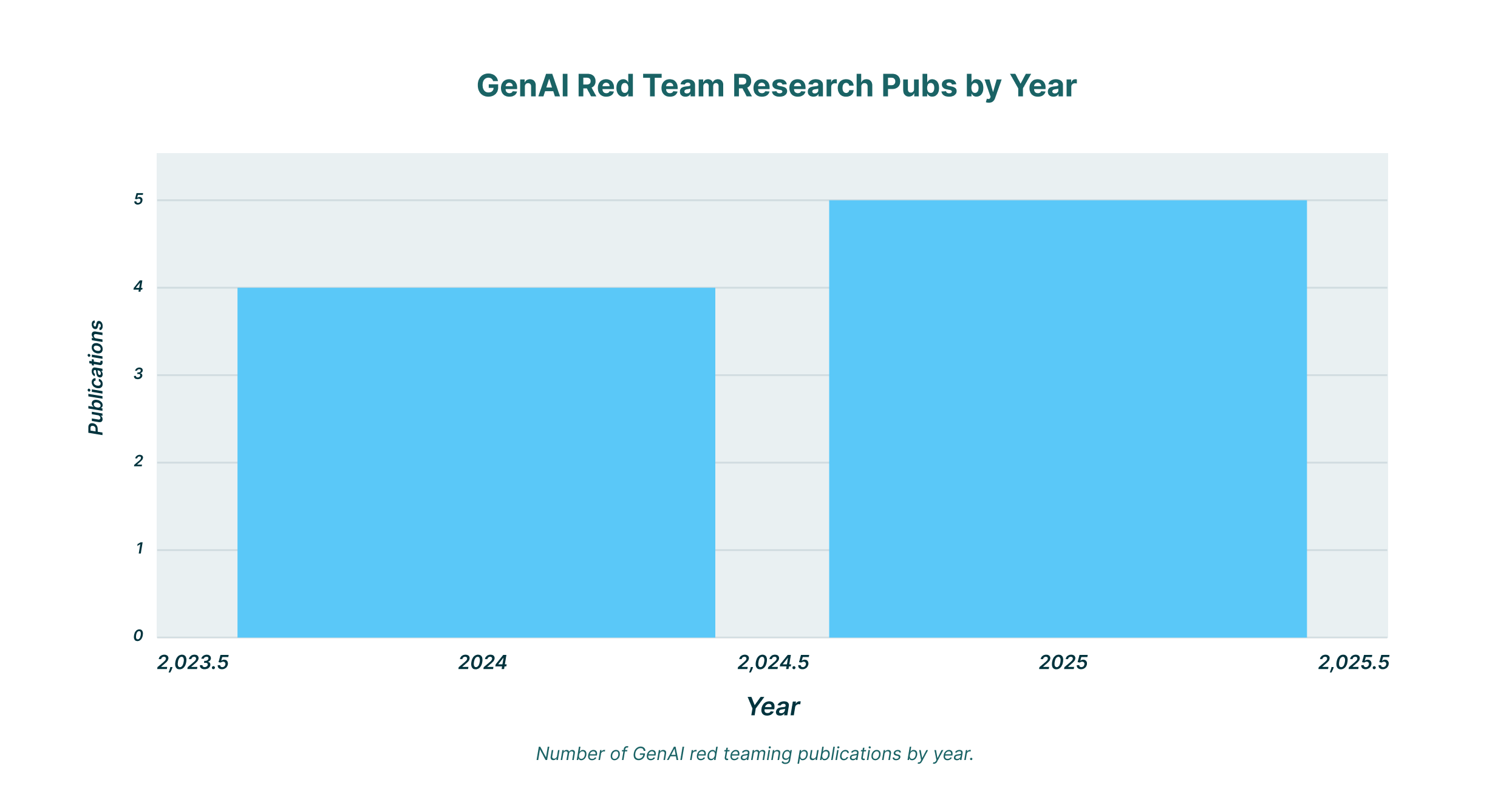The adoption of Generative AI is reshaping industries, but this rapid integration introduces a new class of risks that conventional security measures are ill-equipped to handle. As organizations embrace tools like ChatGPT, Copilot, and custom Large Language Models (LLMs), they expose themselves to novel attack surfaces where the primary weapon is no longer malicious code, but natural language itself. In this context, a proactive, adversarial approach to security testing has become essential. This is the domain of GenAI red teaming, a practice that stress-tests AI systems to uncover their hidden flaws before they can be exploited.
This discipline borrows its name from military and cybersecurity exercises where a “red team” emulates an attacker to test an organization’s defenses. When applied to AI, it involves a systematic process of probing, questioning, and attacking models to identify vulnerabilities related to safety, security, and ethics. So, what is red teaming in AI? It is the practice of simulating adversarial behavior to discover unforeseen risks that emerge as AI evolves, moving beyond static checks to explore how these complex systems behave under duress.
The New Threat Ecosystem: Why AI Requires a Dedicated Red Team
Traditional cybersecurity focuses on protecting networks, endpoints, and applications from code-based attacks. Generative AI, however, operates differently. The main interface for exploitation isn’t a software vulnerability in the classical sense, but the prompt window itself, making every user interaction a potential attack vector. An AI red team is specifically assembled to understand and exploit these unique weaknesses. Their work is critical because GenAI risks are not just technical; they are also societal and ethical.
The challenges an AI red team addresses include:
- Data Leakage and Privacy Breaches. Employees using GenAI tools for productivity might inadvertently paste sensitive corporate data, source code, financial records, or customer PII into a prompt. LayerX notes that the browser has become the number one channel for this kind of data leakage, as employees willingly share information with external AI platforms.
- Prompt Injection and Hijacking Attackers can craft prompts that trick an LLM into ignoring its original instructions and executing the attacker’s commands instead. This could be used to generate malicious content, exfiltrate data from the session, or manipulate the application’s behavior.
- Generation of Harmful Content Models can be “jailbroken” to bypass their safety filters and produce harmful, biased, or inappropriate outputs. An AI red team systematically tests the resilience of these safety guardrails.
- Shadow AI and Unsanctioned Usage The ease of access to GenAI tools means employees often use them without corporate approval, creating “Shadow AI” or “Shadow SaaS” ecosystems that security teams cannot see or control. LayerX provides solutions to gain full audits of all SaaS applications, including these unsanctioned tools.
These risks demonstrate that securing GenAI is not just about protecting the model’s infrastructure but about governing its use. This is where the practice of red teaming LLM systems becomes indispensable.
Simulating the Adversary: Core Practices in LLM Red Teaming
The work of red teaming LLMs is multifaceted, employing a range of creative and technical strategies to push models to their limits. This process isn’t about running through a simple checklist; it’s an exploratory, iterative, and often surprising endeavor. A dedicated red team AI will employ several core practices.
| Technique | Objective | Example Attack Vector |
| Adversarial Prompting | Bypass safety filters and induce policy violations | Multi-turn dialogues that coax hidden instructions |
| Probing for Sensitive Data | Exfiltrate model-training or session data | Queries designed to reveal proprietary code or PII |
| Bias & Harm Detection | Identify discriminatory or harmful outputs | Prompts targeting specific demographics for fairness test |
Adversarial Prompting and Jailbreaking
This is perhaps the most well-known aspect of LLM red teaming. It involves crafting inputs designed to make a model violate its own safety policies. Techniques range from simple instructions to complex, multi-turn dialogues that gradually coax the model into a compromised state. For example, a red teamer might ask a model to write a fictional story that includes instructions for a harmful activity, thereby bypassing a direct refusal. The goal is to identify the patterns and logical loopholes that lead to safety failures.
Probing for Sensitive Data
A critical task in LLM red teaming is to test whether a model might inadvertently reveal sensitive information it was trained on. This could include personal data, proprietary code, or other confidential details. Red teamers might also test the application built around the LLM for vulnerabilities that allow unauthorized access to data within the system, such as other users’ conversation histories or connected data sources. LayerX emphasizes that the browser is the primary gateway for these interactions, making it a crucial point for applying security policies to prevent data exfiltration.
Evaluating for Bias and Harmful Stereotypes
AI models learn from vast datasets, which often contain societal biases. AI safety testing involves probing models to see if they generate outputs that are discriminatory, stereotypical, or otherwise harmful to specific demographic groups. This can involve feeding the model prompts related to different ethnicities, genders, religions, and nationalities to assess the fairness and equity of its responses.
Testing for Misinformation and Disinformation
A red team AI also evaluates a model’s susceptibility to generating false or misleading information. This can be tested by asking leading questions, providing false premises, or requesting content on controversial topics known to be targets of disinformation campaigns. Understanding how and why a model generates incorrect information is key to building more trustworthy systems.
The iterative cycle of an AI red teaming engagement is crucial: test, document vulnerabilities, work with developers to implement defenses, and then re-test to ensure the fixes are effective and haven’t introduced new problems.
From Theory to Practice: Implementing a Continuous AI Safety Testing Program
Effective AI safety testing is not a one-time event performed just before a product launch. Given the dynamic nature of AI models and the constantly evolving tactics of adversaries, it must be a continuous process integrated throughout the AI development lifecycle.
| Phase | Description | Feedback Loop |
| Plan | Define objectives, scope, and failure thresholds | Policies refined based on prior assessments |
| Test | Execute adversarial prompts and automated scans | Vulnerabilities logged and prioritized |
| Remediate | Implement model guardrails, safety filters, and patches | Defense effectiveness validated through re-testing |
Best practices for establishing a program for red teaming LLM applications include:
- Define Clear Objectives and Scope: Before testing begins, organizations must define what they are testing for. This involves creating clear policies that outline unacceptable behaviors, from data leakage to generating hateful content, and establishing measurable thresholds for what constitutes a failure.
- Assemble a Diverse Team: An effective AI red team should be multidisciplinary. It should include not only security engineers but also social scientists, ethicists, lawyers, and domain experts who can anticipate a wide range of potential harms and attack vectors.
- Use a Combination of Manual and Automated Testing: Automated tools can rapidly test for known vulnerabilities and run thousands of variations of adversarial prompts. However, human creativity and intuition are irreplaceable for discovering novel, complex “jailbreaks” that automated systems might miss.
- Iterate and Adapt: The findings from red teaming exercises must feed back into the development process to improve model alignment, strengthen safety filters, and patch system-level vulnerabilities. The red team should then attack the improved system to validate the defenses.
The Browser: The Final Frontier in GenAI Security
While AI red teaming is essential for improving the inherent safety of models, no model can be made perfectly secure. Vulnerabilities will always exist, and creative adversaries will find new ways to exploit them. For enterprises, this means that while improving the model is important, controlling the environment where users interact with the model is paramount. That environment is overwhelmingly the web browser.
Imagine a financial analyst using a third-party GenAI tool to summarize quarterly earnings reports. An attacker could use a prompt injection attack to trick the LLM into sending parts of that sensitive financial data to an external server. Or, the analyst might simply, and naively, paste the entire confidential report into the prompt window, creating a massive data leak.
This is where browser-level security becomes the most practical and effective control point. An enterprise browser or a security-focused browser extension can enforce security policies at the exact moment of interaction, providing a last line of defense that model-based safety features cannot.
LayerX provides a solution tailored for this challenge by:
- Mapping GenAI Usage: LayerX can identify all GenAI tools being used in the organization, including unsanctioned “Shadow AI,” providing the visibility needed to manage risk.
- Enforcing Data Loss Prevention (DLP): It can prevent users from pasting sensitive data, such as code, PII, or financial information, into GenAI prompts. It can detect and redact this information in real time before it leaves the browser.
- Controlling User Activity: The solution can apply granular, risk-based policies to all SaaS usage, including blocking file uploads to non-compliant AI tools or preventing logins with personal accounts.
By securing the browser, organizations can create a safe operational bubble for GenAI use, mitigating the risks identified during GenAI red teaming exercises without stifling the productivity benefits these tools provide. It shifts the focus from trying to build an impenetrable fortress around the model to simply controlling the gates.

